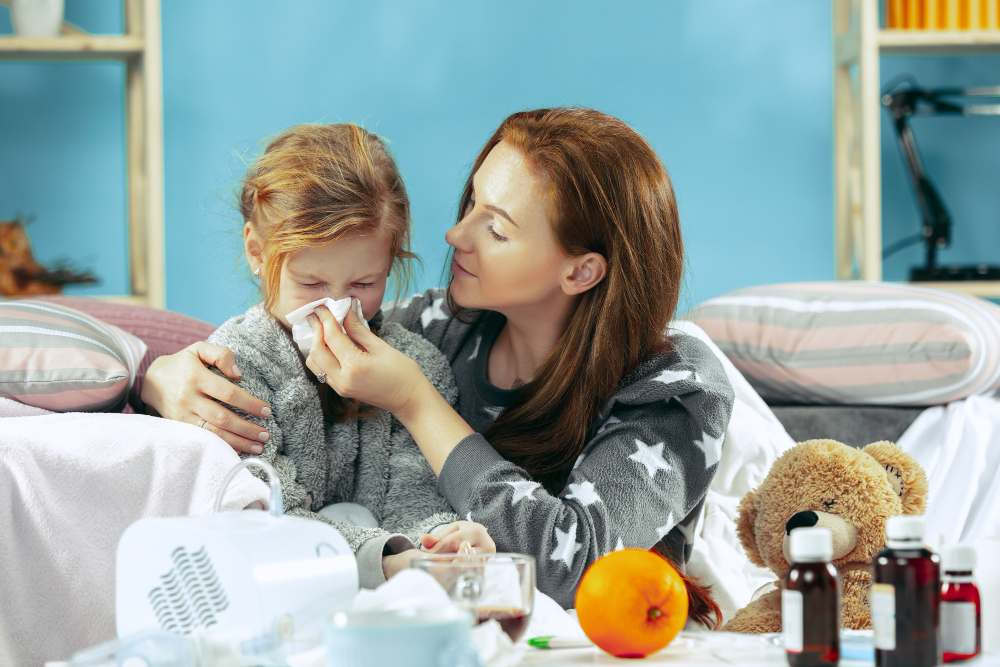Pneumonia is a common and potentially life-threatening respiratory infection that affects millions of children worldwide. In India, it remains a significant public health concern and a leading cause of childhood mortality. While several factors contribute to the development of pneumonia, temperature variability has emerged as an important aspect that can influence the susceptibility and severity of the disease in children. In this article, we will explore the relationship between temperature variability and childhood pneumonia, shedding light on its implications for prevention and management.
Temperature Variability and Immune Response:
The human body has a remarkable ability to regulate its internal temperature within a narrow range. However, when exposed to rapid or extreme temperature changes, especially in the context of temperature variability, the immune system may become compromised. This vulnerability can make children more susceptible to respiratory infections, including pneumonia. Fluctuations in temperature can weaken the body’s defense mechanisms, impair the function of immune cells, and create an environment conducive to the growth and proliferation of pathogens.
Seasonal Variation in Childhood Pneumonia:
In regions with distinct seasonal variations, such as India, the incidence of childhood pneumonia tends to follow a predictable pattern. Cold and dry weather conditions, commonly experienced during winter, can increase the risk of respiratory infections. The combination of low temperatures, reduced humidity, and indoor confinement contributes to the transmission of pneumonia-causing viruses and bacteria. Moreover, temperature variability during these seasons further challenges the body’s ability to adapt and mount an effective immune response, making children more susceptible to infection.
Impact of Air Pollution:
Air pollution is another significant factor that exacerbates temperature variability and contributes to the development of childhood pneumonia. Pollutants present in the air, such as particulate matter and toxic gases, can interact with temperature variations to create an environment conducive to respiratory infections. High levels of pollution have been linked to increased respiratory symptoms, compromised lung function, and a higher incidence of pneumonia in children. The combined effect of temperature variability and air pollution further amplifies the risk of developing severe pneumonia.
Preventive Measures:
To mitigate the impact of temperature variability on childhood pneumonia, several preventive measures can be implemented:
- Vaccination: Immunization against common pathogens causing pneumonia, such as Streptococcus pneumonia and Haemophilus influenzae type b, is essential. Vaccination significantly reduces the risk of infection and helps prevent severe cases.
- Adequate clothing and shelter: Children should be appropriately dressed for prevailing weather conditions, particularly during periods of temperature variability. Layered clothing can help maintain a stable body temperature and minimize the risk of respiratory infections.
- Indoor air quality: Improving indoor air quality is crucial, especially during seasons with temperature variability. Proper ventilation, regular cleaning, and the use of air purifiers can help reduce the concentration of pollutants and minimize the risk of respiratory infections.
- Hand hygiene: Encouraging regular handwashing practices among children and caregivers is vital for reducing the transmission of pathogens that cause pneumonia.
Management of Childhood Pneumonia:
When a child develops pneumonia, early diagnosis and prompt treatment are crucial. The management of childhood pneumonia includes:
- Medical evaluation: A thorough medical evaluation, including a physical examination and chest X-ray, helps confirm the diagnosis and determine the severity of the infection.
- Antibiotic therapy: In bacterial pneumonia cases, appropriate antibiotic therapy is essential to eliminate the infection and prevent complications. However, viral pneumonia, which is more common, requires supportive care, such as rest, hydration, and fever management.
- Hospitalization: Severe cases of childhood pneumonia, especially in infants, may require hospitalization for close monitoring, oxygen therapy, and intravenous antibiotics.
- Follow-up care: After recovery from pneumonia, follow-up visits with a healthcare provider are essential to assess lung function, monitor for any complications, and provide guidance on preventive measures.
Conclusion:
Temperature variability plays a significant role in the susceptibility and severity of childhood pneumonia. The combination of fluctuating temperatures, seasonal changes, and air pollution increases the risk of respiratory infections in children. Implementing preventive measures, including vaccination, proper clothing, and maintaining indoor air quality, can help reduce this risk. Early diagnosis and appropriate management of childhood pneumonia are crucial for a successful recovery. By understanding the impact of temperature variability, we can work towards creating a healthier environment for our children and minimizing the burden of pneumonia.


